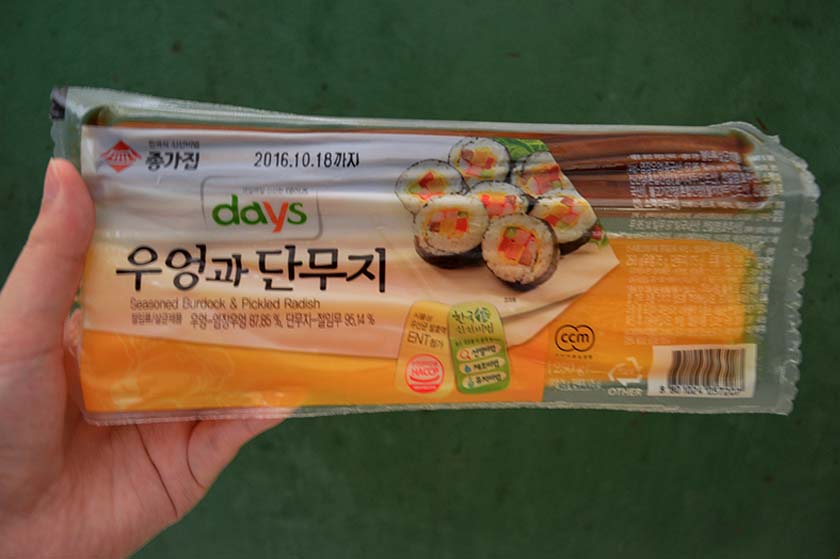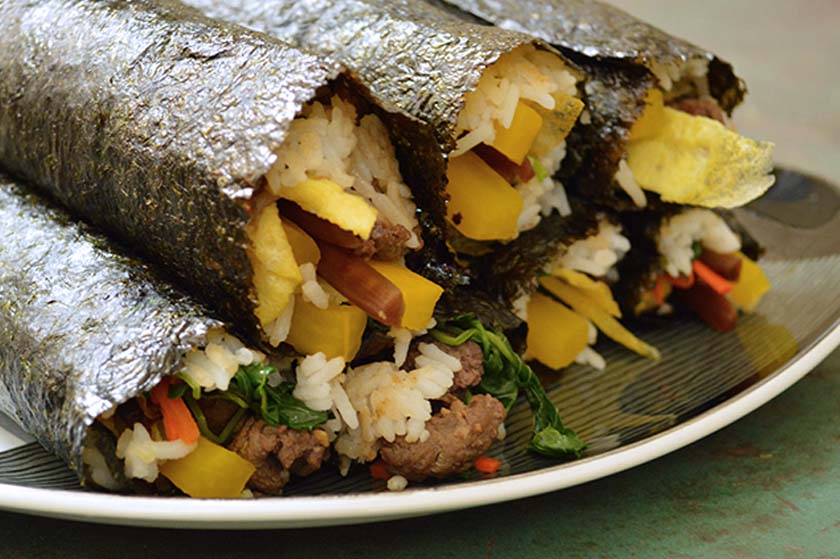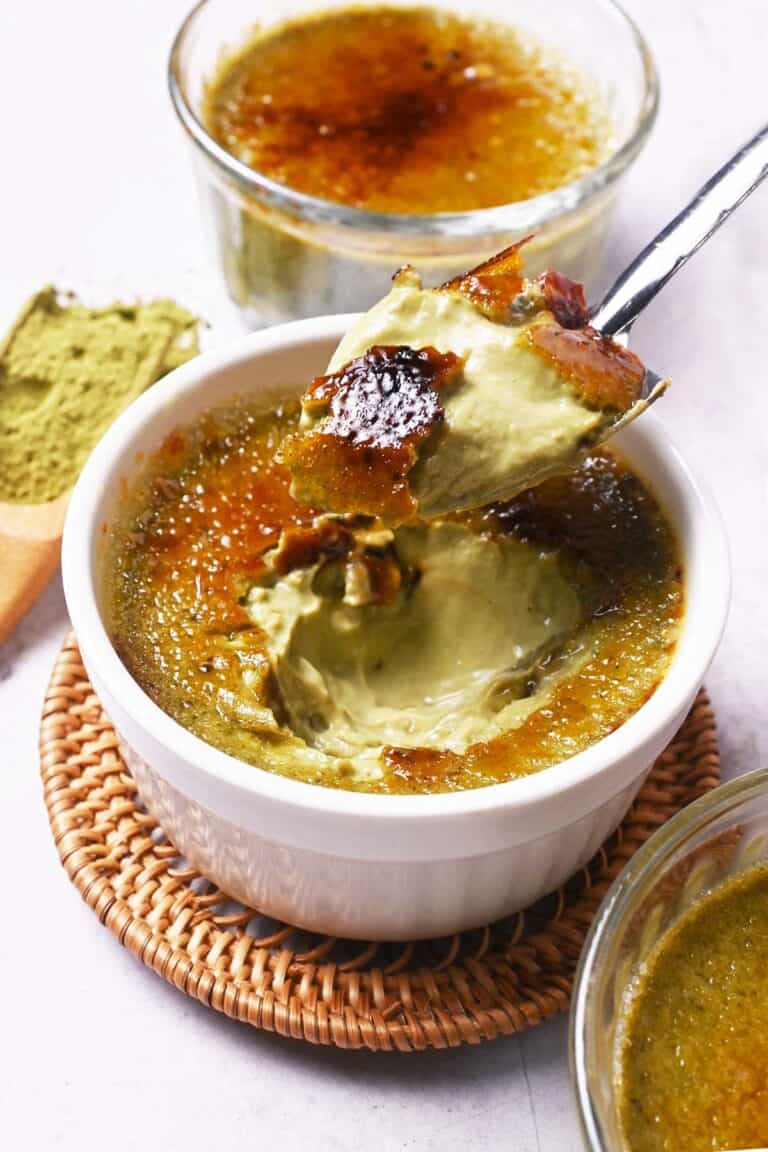Kimbap
This post may contain affiliate links. Please read my disclosure policy for details.
Kimbap or Gimbap (김밥) is a Korean dish made from cooked rice and other ingredients that are rolled in gim and served in bite-sized slices.

The Korean Wave (Hallyu) or Korean fever refers to the sudden increase in global popularity of South Korean culture around the world in the last ten years. This is largely because of the Korean entertainment industry, and the popularity of K-drama and K-pop. I have been a great fan of many Korean dramas and variety shows. The world of K-dramas often features mouthwatering food dishes. It’s hard to watch drama and get cravings for ramyun. There is nothing better than trying out new food or recipe, I can list a lot of Korean foods I want to try and one of them is kimbap.
Kimbap vs Sushi
Kim or gim means dried sheets of laver seaweed in Korean. Bap or bop means rice. Therefore, Kimbap or Gimbap (김밥) is a Korean dish made from cooked rice and other ingredients that are rolled in gim and served in bite-sized slices. Korean kimbap are rice rolls that look a lot like sushi. However, kimbap‘s appearance usually more colorful and healthier because it uses many vegetables inside. It is also often sold wrapped in aluminum foil. It is usually eaten at picnics and outdoor events because of its convenience and portability. Traditional fillings include seasoned vegetables, egg, meat, but these days anything goes.
Varieties of Kimbap
Kimbap has a lot of variety, and below are the most common variation:
- Chamci Kimbap (참치김밥) is filled with tuna and other vegetables
- Kimchi Kimbap features kimchi as the main filling
- Chungmu Kimbap (충무김밥) is made with only rice as the filler ingredient
- Mayak Kimbap (마약김밥) is a vegetarian style seaweed rice roll. People say it’s so yummy that you get badly addicted to it. Hence, it’s named “Drug Seaweed Rice Rolls”
- Samgak Kimbap (삼각김밥) is a triangle-shaped kimbap sold in many convenience stores in South Korea.
Kimbap Variations
The beauty of kimbap rolls is you can customize them with your preferred ingredients. As long as you can stuff and roll them up into beautiful cylinders.
Here are some common filling ingredients used for kimbap;
- Rice: short-medium rice grain, brown rice
- Protein: bulgogi/ground beef, chicken, egg, ham, tuna, fish cake, imitation crab, cheese
- Vegetables: kimchi, carrot, spinach, zucchini, mushrooms, cucumber, burdock root, danmuji, daikon

Kimbap’s Key Ingredients
Danmuji is the essential ingredient in making good kimbap. It is basically a pickled yellow radish, and it tastes tangy, sweet, and refreshing. I have to say that danmuji gives off exploding flavor in kimbap and I cannot find another good alternative for it. I found danmuji at a local Korean grocery store in transparent plastic packaging. It is sold in whole yellow radish block or slices. For kimbap, we need the one in strips. I used the one in the packaging like the picture below, it is sold altogether with gosari. Gosari is a young stem of fernbrake or bracken and it is commonly known as wild edible greens in Korea. I use gosari in my recipe, but it can be omitted.

Tips for Making Kimbap
Once you have all the ingredients prepped, the assembling goes by pretty quickly, and it’s worth it because it’s like having a well-balanced meal in every bite. Here are some tips for making kimbap;
1. Use freshly cooked rice
Freshly cooked rice is the best for making kimbap. It tends to stick easier to the seaweed. Wet your fingers before spreading the rice onto the seaweed to prevent the rice from sticking to your hands. Put a small bowl of water next to your rolling station so that you can wet your hand in between rolls.
2. Season everything
Traditionally, the rice and fillings in kimbap are individually seasoned to give an interesting combination of textures and flavors. For the rice, it is traditionally seasoned with sesame oil and salt. You will notice a huge different flavor between the seasoned and unseasoned rice. The seasoned rice really takes plain rice to tasty heights.
For the meat, I marinate it with soy sauce and other seasonings for at least 30 minutes. The marinating process will deepen the flavor and tenderize the meat before the cooking process. Meanwhile, the vegetables usually are blanched or stir -ried lightly to retain their original flavor. Then, they are seasoned with a small amount of sesame oil and salt just to give them a nutty flavor and savory notes. You do not need to dip kimbap into any kind of sauce after everything is seasoned well.

3. Roll the seaweed tightly
It takes some practice to roll the kimbap perfectly. Use a bamboo sushi roller or a piece of tin foil to roll them easily. Lay the shiny side of seaweed down and spread the rice, leaving the top 1 inch bare. Lay the fillings about a third of the way up from the bottom of the seaweed. Then, roll from the bottom and press down to make the fillings stay in. As you continue to roll, put the whole thing down toward the end of the bamboo mat. Just remember to roll it tightly by putting firm, even pressure with your hands all over the roll. Spread a tiny dab of water along the top seam to hold the roll together.

4. Brush kimbap with sesame oil
Rub or brush the roll with a little bit of sesame oil for an extra nutty flavor and a shiny look. This process also makes it easier to cut. Use a sharp knife for cutting your rolls. You need to make a clean slicing motion without pressing on the roll or everything will fall apart.



Ingredients
- 5 sheets nori/seaweed sheets
- 4 cups freshly cooked short-medium white rice
- 2 tsp sesame oil
- 1/2 tsp salt, or more for taste
- Sesame oil, for serving
Marinated Beef
- 8 oz (225 gr) bulgogi/ground beef
- 1 tbsp soy sauce
- 2 tsp sesame oil
- 1 tbsp granulated sugar/brown sugar
- 1/2 tsp minced garlic
- Vegetable oil
Egg Strips
- 3 eggs
- 1/4 tsp salt
Vegetables
- 1 bunch spinach, stems removed
- 1 medium carrot, julienned
- 1 tsp sesame oil
- 1/2 tsp salt, or more for taste
- Vegetable oil
- 5 strips gosari/fernbraken
- 5 strips danmuji/pickled radish
Instructions
Rice
- Place freshly made rice in a large bowl. Gently mix salt and sesame oil over top with a rice scoop. Let it cool down enough so it’s no longer steaming. Cover and set aside.
Marinated Beef
- Marinate the beef with soy sauce, sesame oil, sugar, and garlic.
- Heat up a pan over medium-high heat and cook the marinated beef until well cooked. Set aside.
Egg Strips
- In a medium bowl, beat eggs with salt.
- Drizzle oil on a heated non-stick pan. Wipe off the excess with paper towel. Pour the egg mixture into the pan with low heat. Spread it into a large circle so it fills the pan. When the bottom of the egg is cooked, flip it over with spatula. Remove from the heat and let it cook slowly on the hot pan for about 3-4 minutes.
- Transfer the cooked egg into a plate. When it is cooled enough to handle, cut it into 1/2-inch (1 cm) long strips.
Vegetables
- Bring a large pot of water to a boil over high heat and prepare an ice bath. Blanch the spinach, place immediately in the ice bath, then squeeze out water. Season with 1/2 tsp sesame oil and 1/4 tsp salt. Set aside.
- in a medium bowl, mix the carrot matchsticks with 1/4 tsp salt. Mix well and let it sweat for 5-10 minutes.
- Heat the pan and add a few drops of vegetable oil. Squeeze out excess water from the carrot, then saute for about 1 minute. Stir in 1/2 tsp sesame oil into the sauted carrot. Set aside.
Assemble
- Place a sheet of nori on a bamboo mat with the shiny side down. Spread evenly about 3/4 cup cooked rice over the top, leaving about 1 inch uncovered on top of the nori. Place beef, 1-2 egg strips, carrot, spinach, a strip of gosari, and a strip of danmuji in the center of the rice.
- Use both hands to roll the mat over the fillings. Remove the roll from the mat. Repeat 4 more times with the remaining ingredients.
- Brush sesame oil on the finished rolls and sprinkle some sesame seeds over the top. Cut each roll into 1/4 inch (6 mm) bite-size pieces with a sharp knife, occasionally wiping it with a wet paper towel or cloth to clean the starch off and to ease cutting. Put it on a plate and serve immediately or pack it in a lunchbox.







AMAZING recipe!!! Thanks for sharing this with us! I have love recipe of you.
Thank you! We loved them perfect recipe!
Did you use seasoned or unseasoned nori?
I have used both seasoned and unseasoned nori for the recipe. Unseasoned nori worked the best because seasoned nori is too crisp and fragile to be wrapped into kimbap.
I like Kimbap. Thanks for your information